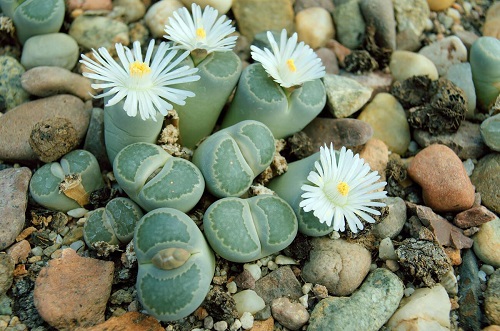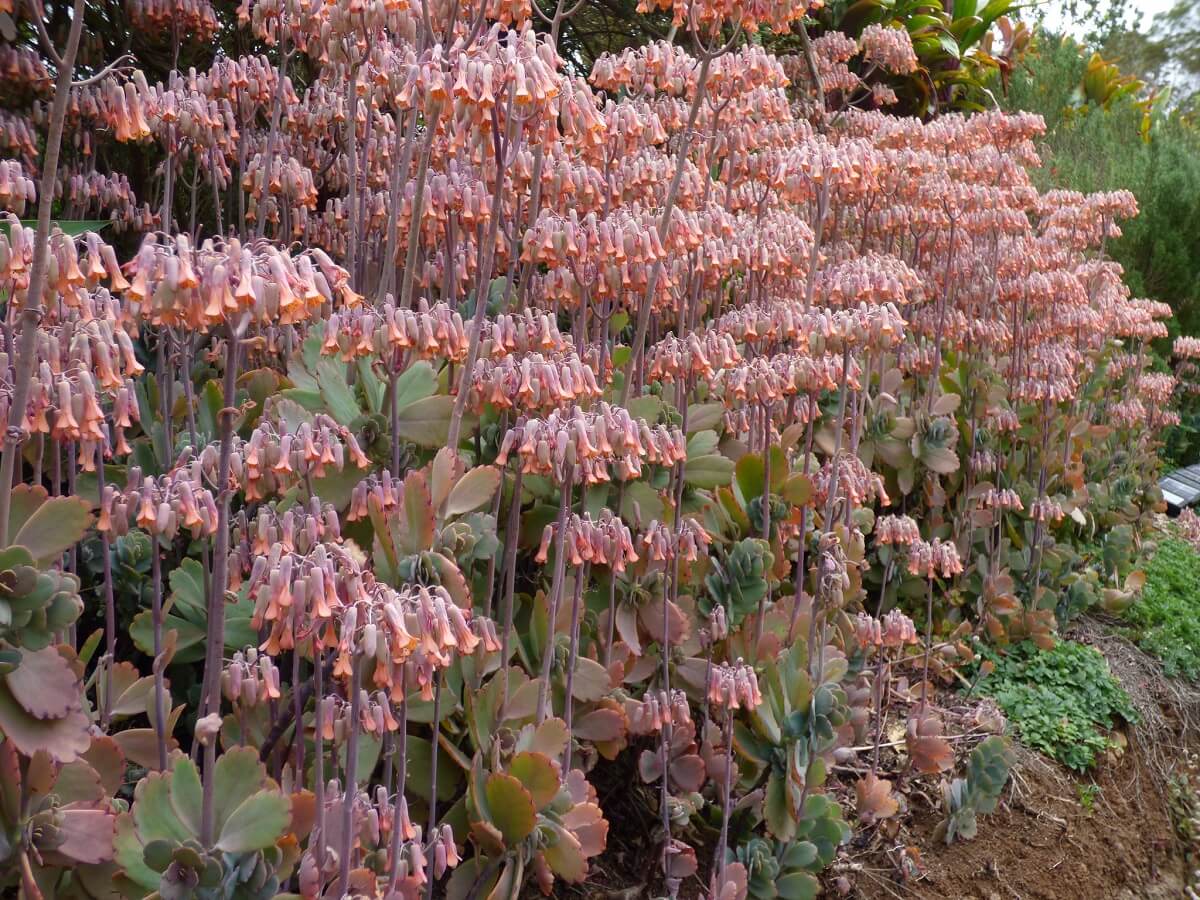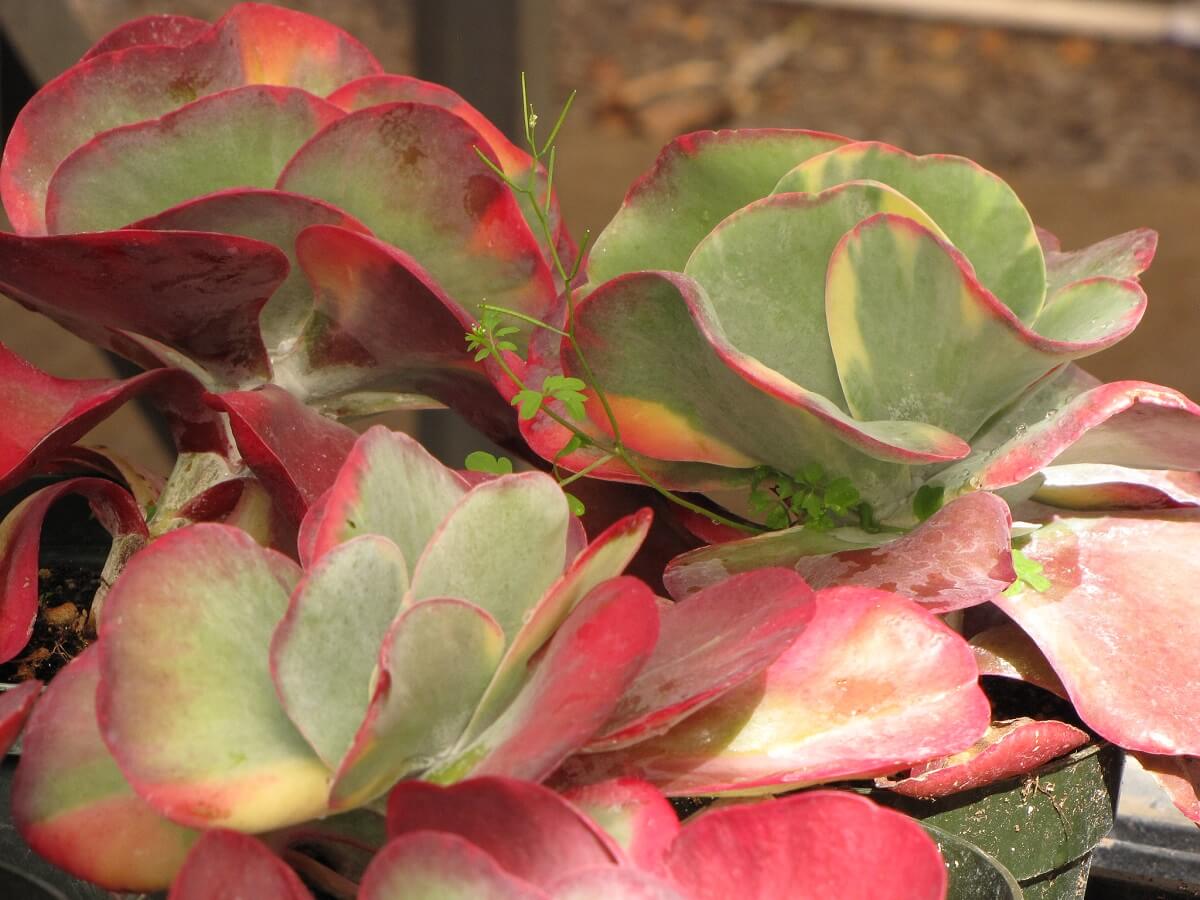“Is that a real flower?” I asked, studying the display of succulents in my friend’s garden window.
“Of course,” she replied (sounding a little miffed). “You know I don’t go in for fake flowers. Or fake anything, for that matter.”
“But it’s almost too pretty to be real,” I insisted. “What is it?” The geometric arrangement of the floral appendages, for lack of a better word, was so colorful — almost like a paint-by-number. Six appendages full of blue, purple, and pink floral cups.
“It’s a succulent.” My friend beamed — always thrilled to introduce something new to my botanical knowledge. “Some call it Kalanchoe. Others call it Bryophyllum. Just about everyone refers to it as a geometric succulent.”
“And there are many others just as beautiful as this one,” she added. “I thought I’d start with the most stunning selection, but I want to add more. They’ll only grow indoors here. They’re native to Africa and California and need lots of sun and warmth.”
I wasn’t sure I’d have the luck my friend had with succulents. My level of succulent success weighed heavily on the hen and chicks variety – very common, very simple, very easy to grow. The nice thing about hen and chicks was they survived our winters and prospered outdoors with little care. When I brought them in, however, they shriveled up and died. So, I left them outside and they thrived.
The more sophisticated and absolutely gorgeous succulent my friend had added to her collection, was definitely a beauty and one worth trying to nurture for its showpiece quality. It required some serious research.
Native to Africa and, more specifically to Madagascar, this plant has been naturalized in other tropical and subtropical areas, particularly California. Also known as Widow’s-thrill, Kalanchoe is a genus of about 125 species of tropical succulents and has become a popular houseplant due to its showy qualities.
Different languages and cultures have unique names for this plant. The Spanish name for it is Siempre Vivo which means always alive; in the Odisha state of India, it’s called odia which means, deathless plant; in English-speaking Caribbean countries, it’s often called leaf of life or wonder of the world. These are all names that suggest its almost immortal quality. In other words, it’s difficult to kill this plant.
Kalanchoe is distinctive for geometric beauty with a profusion of miniature plantlets, colorful and orchestrated to create a unique, pattern. The succulent is a perennial plant that can grow to about 8-12 inches in height. It is known to produce flowers throughout the year.
What’s remarkable is the bulbils that are found on the leaves. These bulbils, which appear as a bulb-like growth, will drop off, root, and produce more plants. Propagation couldn’t be easier.
Also known as the air plant, cathedral bells, life plant, miracle leaf, and Goethe plant (I like this name the best — and hadn’t realized Goethe, the famous German poet, was an amateur naturalist), this succulent has become a popular houseplant due to its showy qualities.
The Alluring Allure of Eye-Like SucculentsSucculents come in an astounding array of shapes, sizes, and colors. But some of the most captivating succulents are those that resemble eyes These eye-like succulents showcase nature’s ingenious designs and offer unique visual intrigue In this article, we’ll explore some of the most eye-catching eye-mimicking succulents and what makes them so visually compelling.
The Bloodshot ButtonsOne of the most iconic eye-like succulents is the button plant (Conophytum wittebergense). These tiny stemless succulents native to South Africa grow in tight clusters that spread in mats or carpets. Each individual button is a small round body about an inch across. Their colors range from gray-green to brown, often decorated with fine red lines radiating from a central slit. This slit resembles an opened eyelid, fringed by stubby pink protrusions that look like inflamed eyelashes. When backlit, the slit takes on an eerie bloodshot appearance that makes the button plant seem to gaze upward in a grumpy, sleep-deprived state.
Windows to the SoulCertain living stone succulents also utilize creative optical illusions. These pebble-shaped plants conceal their vibrant inner colors behind their stony exteriors. Lithops optica features specialized translucent patches on the tops of its leaves. These act as “windows” that allow light into the interior, revealing the hidden moist, colorful tissues within the outer walls Similarly, Lithops viridis has a conspicuous white core sandwiched between its twin green leaves This gives it a wide-eyed look, with the white core surrounded by “irises” of green. The translucent patches and visible cores create the illusion of eyes peering out from within the living stones.
Blinking Beauties
Huernia zebrina, also known as owl eyes, boasts a candy-coated optical illusion. Its stems bear zebra-like ridges and its eccentric flowers emerge with shiny red rings encircling white centers. This red-ringed bullseye mimics the look of dilating pupils against erythritic sclera, making the flowers seem to blink. When coupled with the zebra striping, owl eyes appears to ogle passersby with a playful glint. Even when not blooming, its twisting, warty stems give it an otherworldly staring appearance.
Seeing Souls Through Soles
Baby toes (Fenestraria rhopalophylla) produces chubby leaves tipped with crystalline “windows” that resemble actual toe nails. These translucent panels protect the tender tissues below while allowing light to enter and illuminate the leaf interiors. As light varies throughout the day, the windows seem to dilate and contract like living eyes. Adding to the effect are the succulent’s abundant yellow blooms, which surround the leaves with what look like cheerful twitching pupils. Baby toes appears to attentively follow the sunlight with scores of tiny winking eyes.
Fuzzy Peepers
When dormant, Greenovia aurea develops cute fuzzy pink rosettes that look like wide cartoon eyes framed in chubby pink lashes. Nestled against their pale interiors, these rosy peepers take on a charmingly bashful appearance, as if peeking out from beneath a furry hood. In spring, flowers emerge from each rosette’s center sporting prominent yellow stamens that resemble lower lashes coyly batting. In full bloom, Greenovia aurea brazenly flutters its soulful eyes for all to admire.
The Allure of Mimicry
Through eons of evolution, certain succulents have developed remarkable techniques for mimicking eyes. These simulated ocular features likely help deter predators by creating the illusion that a larger creature is watching back. But for plant enthusiasts, thesucculents that resemble eyes offer more than just visual trickery. Their anthropomorphic forms captivate our imaginations. We instinctively connect with their cute peepers and animated appearances. And beyond the novelty, many eye-like succulents also offer easy care and propagation. So consider adding some of these winking, smiling specimens to your sunny windowsills. Just don’t be surprised if you feel their friendly eyes watching your every move!

Lavender Scallops (Kalanchoe fedtschenkoi)

Lavender scallops are a smaller kalanchoe, but they spread and can work as a ground cover. They have gorgeous bell-shaped flowers, too!
Paddles (Kalanchoe thyrsiflora, Kalanchoe luciae)

Probably the best-known varieties, examples like Kalanchoe thyrsiflora and Kalanchoe luciae have overlapping oval leaves, usually bright red in color. This eye-popping variety is definitely a favorite.
10 Beautiful Succulents that Look Like Roses
FAQ
What plant looks like eyes?
Actaea pachypoda, the white baneberry or doll’s-eyes, is a species of flowering plant of the family Ranunculaceae. The plant’s most striking feature is its fruit, a 1 cm diameter white berry, whose size, shape, and black stigma scar give the species the name, “doll’s eyes”. Did it just blink?
How do you take care of a star succulent?
Star Cactus Care
Soil: Requires a well-draining cactus or succulent mix. Adding sand, pumice, or perlite improves drainage, preventing root rot. Avoid heavy, water-retentive soils, which can harm the plant. Water: Water sparingly, allowing the soil to dry out completely between waterings.
How do I identify what kind of succulent I have?
To distinguish between different types of succulents, look for the details. As we’ve seen, some varieties have ciliate hairs along the leaf margins, others have smooth leaves. Look also for the leaf thickness. In general, Echeveria have thicker leaves than sempervivum or aeonium, though not as thick as Graptopetalum.
How to care for teardrop succulents?
- Light: Provide bright, indirect light. …
- Soil: Use well-draining soil, preferably a succulent or cactus mix.
- Watering: Allow the soil to dry out completely between waterings.
